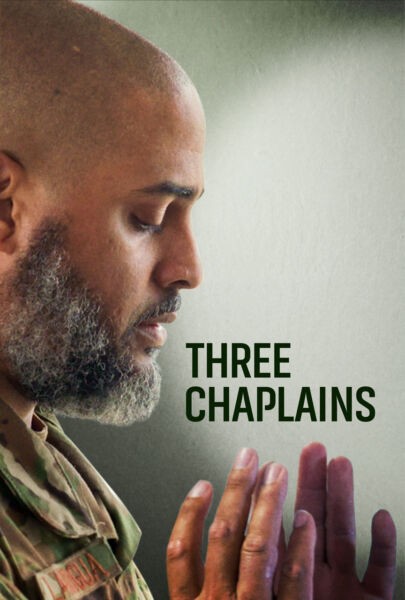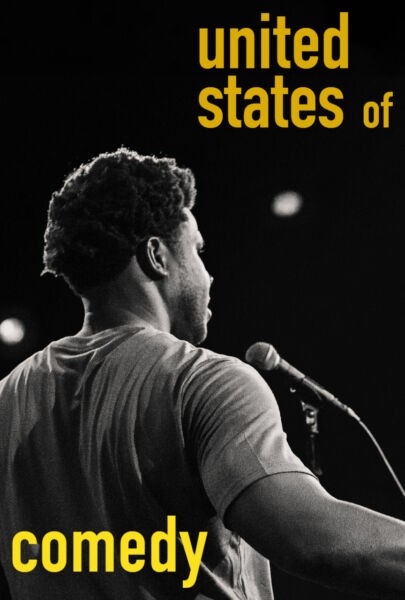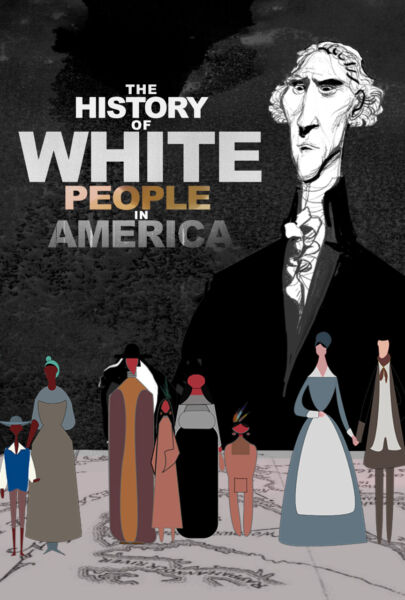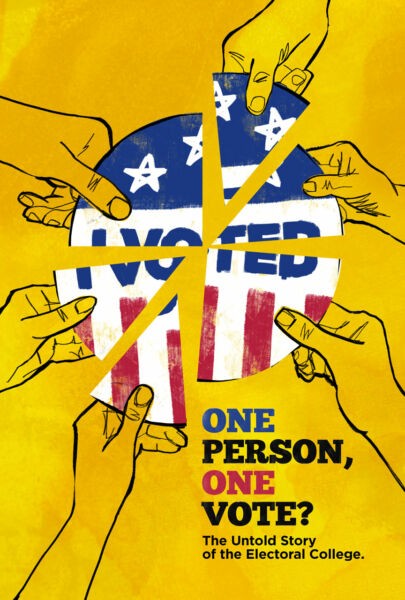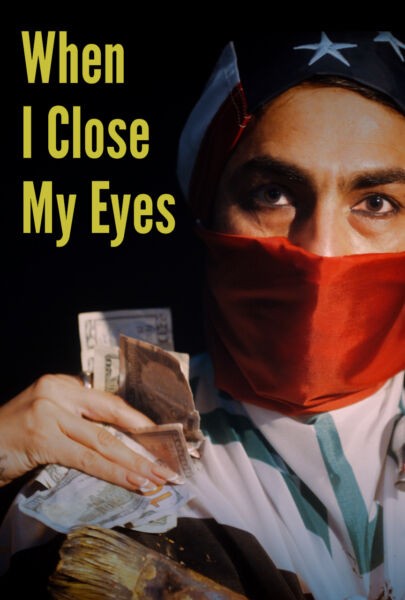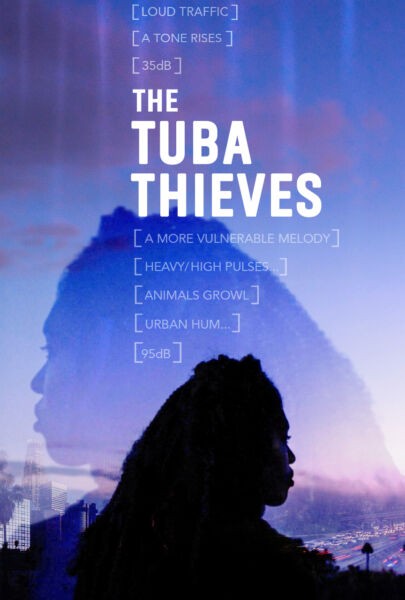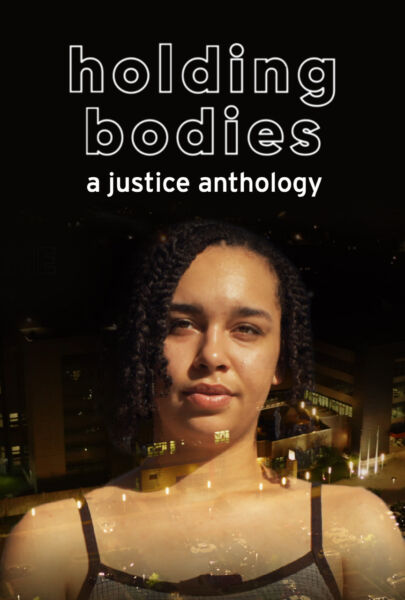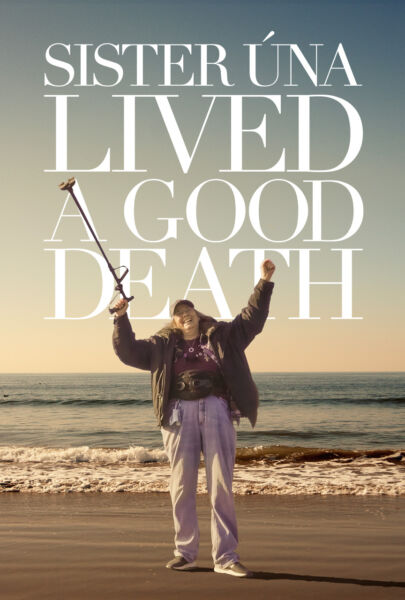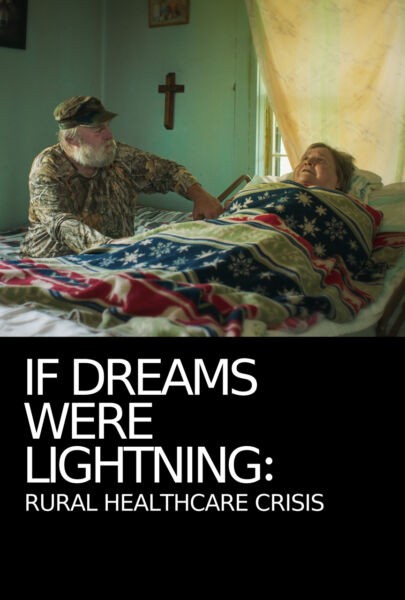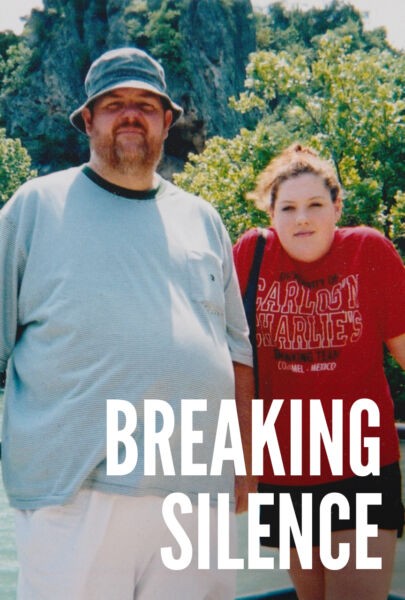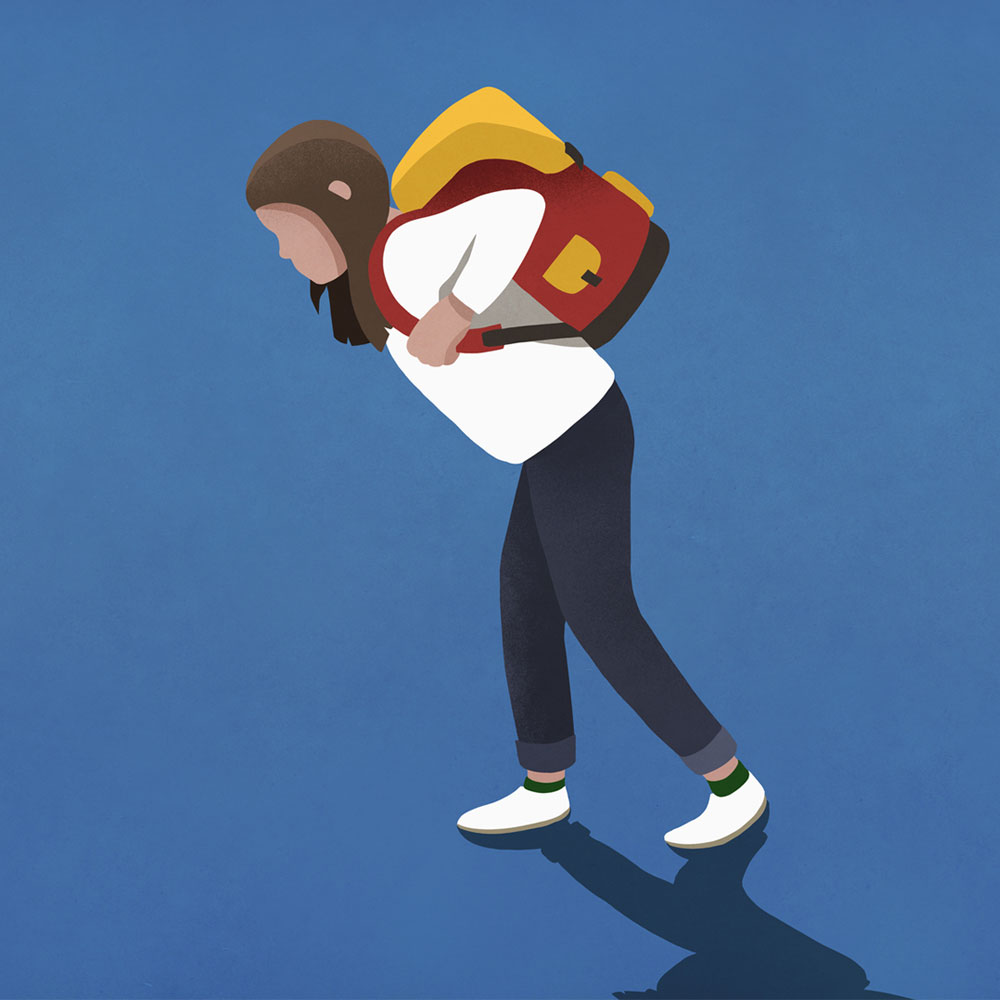
By Gail Cornwall
Christina Zhang, 16, averages a couple hours of free time a day, but it’s hard to watch Netflix. “The whole time you’re thinking about, ‘Oh, what if other people are working right now, and they are getting ahead?’” she says. After taking eight AP classes as a sophomore and completing a college-like application process, Zhang started her third year of high school at North Carolina School of Science and Mathematics, a residential public school for “talented” juniors and seniors. When she calls her grandparents, she worries that she should be studying instead. Not wanting to squander good brain hours on the task, she does her laundry after midnight.
Zhang, whose mother asked that she use a pseudonym for safety and privacy purposes, is part of a new generation of high-achievers.
Six others were profiled by filmmaker Debbie Lum in the documentary Try Harder! Shealand “Shea” Fairchild told Lum’s camera crew, without a trace of doubt or irony: “The kids who are going to higher-level colleges are … the big players of the world. If I don’t go to one of those big colleges, I will not be able to do what I want to do.” In another scene, a teacher asks what multiple rejection letters would mean to a group of seniors.
“Everybody hates you,” answers Alvan Cai.
“What about potentials of your future?” she asks.
“You have none,” he answers.

Alvan Cai (right) and physics group at Lowell High
The documentary is set at Lowell High School in San Francisco pre-pandemic, but the high-pressure phenomenon is a national and continuing one. Adolescents today perceive parents to be more expectant about academic achievement than past generations. They’re shouldering a more rigorous course load, according to transcript studies from the National Center for Education Statistics. And they’re in trouble.
The rate of death by suicide for ages 10 to 24 increased nearly 60 percent between 2007 and 2018, according to the CDC, and other manifestations of psychological distress abound. A 2018 report from the Robert Wood Johnson Foundation listed “excessive pressure to excel” alongside poverty, trauma, and discrimination as barriers to adolescent wellness. And, as we’ll see, kids of color can be uniquely impacted.
But there are solutions.
The psychological costs of high-achieving schools
Economic inequality and insecurity are growing, and, along with them, parental concerns about their children’s futures. It’s often not even about getting ahead. Middle-class parents who see their kids swimming against a financial current think they must sprint like Michael Phelps in the butterfly race just to stay in the middle class. Families also read about college acceptance rates trending lower. The average at the nation’s top 51 schools was 35.9 percent in 2006 but by 2018 it was 22.6 percent. For top-10 schools, that stat went down from 16 percent to 6.4 percent. Like Lowell student Shea Fairchild, whole communities come to believe that only a degree from Harvard or Stanford guarantees access to success—and you have to be the best of the best to get in.
Meanwhile, scores and grades are viewable online in real-time. Sometimes a teen’s parents, or even their parents’ friends, know their test results before they do. Peers’ stories on Instagram feature the scouts who’ve come to check them out, the nonprofits they’ve started, and how they think they fared on the SAT.
Children respond to perfectionistic expectations and competition in a variety of ways. Many internalize sky-high goals and subscribe to “grind culture,” the youth version of “hustle culture.” Like Zhang, they feel guilty unless every moment is productive. Beyond developing their own perfectionism (which isn’t a good thing for academic performance according to a 2020 meta-analysis and paper), these kids end up living for the future rather than the present and compulsively comparing themselves to others.

Ian from Try Harder! holds breath before opening college letter
Then they suffer all the detritus of those psychological phenomena: anxiety, depression, inefficiency, lack of intrinsic motivation, contingent self-worth, burnout, academic entitlement, somatic symptoms like stomach aches, sleep loss, and more.
As a professor at Yale over two decades ago, Suniya Luthar first attributed the “disturbingly higher” rates of substance use, anxiety, and depression she found in certain communities to affluence, but additional research later showed “that it is not so much about family wealth as it is living in a subculture of competitiveness,” she says. These “hotbed school environments” are now known in academic studies as “high-achieving schools” or “HAS’s.”
She says, “The kids are looking over their shoulder at each other and saying, ‘Who’s going to overtake me?’ which is a heck of a way to do adolescence.” In a study of 1,608 students, published in 2020, her team confirmed that negative social comparisons are tied to bad outcomes.
“The feeling is that there’s not enough room at the table for all of us,” Luthar says.

That description sounds familiar to Zhang. In seventh grade, she wasn’t particularly driven. But she looked around her “very competitive” magnet middle school and saw others involved in lots of extracurricular activities. “There was a sort of a shift for me,” she says, “in terms of not wanting to fall behind your friends. So I took pre-calculus the summer before ninth grade.” As a freshman at a magnet high school, Zhang felt “a pressure, a culture, to keep taking AP classes even if they are not necessarily the classes you are interested in.”
READ MORE >>
A Wild Two Years Since ‘Try Harder’: What You Need to Know About Lowell High School
Not only do enjoyment and fulfillment not drive how she and her HAS classmates spend their time, but they don’t even have room to figure out what they like. “If we aren’t good at it almost immediately, we don’t allow ourselves to spend time on it,” she says. Other than reading, she doesn’t have hobbies that don’t have competitions attached. “It’s hard for me and a lot of my friends to even think about spending a lot of time on something that doesn’t have to do with college.” In other words, their motivation is not about self-determination, which is the kind associated with happiness and well-being.

From Try Harder!
That’s likely one reason the National Academy of Sciences labeled children in HAS’s an “at-risk population” in 2019, saying that studies not just in the U.S. but also in places like Norway have found rates of clinically significant problems much higher than national norms. Research on German students ties high-achieving schools to negative self-concept and emotions. Not all struggle, but a disproportionate number pay a nontrivial psychological price.
“You are left with a sort of mindset,” Zhang says, “You attach a lot of your self-worth to your achievements.” Kids judge and feel judged. Growing up in that atmosphere, “I wouldn’t say is particularly healthy,” she says.
For some, fear of failing can lead to paralysis which makes it hard to get started on projects. In The Disintegrating Student, Jeannine Jannot writes about high-performing kids who give up when they begin to struggle. They’d rather be considered lazy or defiant than dumb.
Zhang experiences fear of failure differently. When she doesn’t win a competition, “The idea that if you just worked a little bit harder you could have gotten it, is amplified a ton,” she says. “Sometimes I will go back and hyper-analyze…. I really beat myself up over mistakes, like, ‘If I didn’t win this, then I’m worthless.’” When she does win, “It’s not a ton of joy.” Mostly, she’s just afraid of what it will mean if she doesn’t win the next one. That contingent, all-or-nothing sense of self-worth is fragile and has been proven time and again to be a recipe for anxiety, a fixed mindset, and other ill effects.
Zhang’s older brother’s class at the magnet high school wasn’t quite as competitive, and she says her parents didn’t push him much. But when her cohort took pre-calc that summer, her mom wanted to help. Zhang ended up ranked first in her class. She doesn’t think of her parents as a source of pressure, but says, “My mother did want me to take as many AP classes as possible … and maintain that rank.”
In The Unlikely Art of Parental Pressure, Christopher Thurber and Hendrie Weisinger write, “Loving, well-intentioned parents from all over the world are applying unhealthy pressure.” And that is tied to an additional explanation Luthar and her colleagues give for poor mental health in HAS settings: a key protective factor—strong relationships—can be undermined.

[Picture courtesy of Monstera on Pexels]
When it comes to friendships, Zhang has them. But she says, “There’s definitely feelings of not being truly proud of your friends for winning something if you wanted that as well.”
Competition, Luthar says, can constrain trust and decrease friendship quality. Robust peer friendships allow adolescents to safely individuate from their parents, but in these settings, peers can feel pitted against each other. This potential supportive factor isn’t just neutralized, it becomes a source of distress in its own right, Luthar says.
How people of color are uniquely harmed
Black adolescents face multiple stressors, including discrimination and “stereotype threat,” the pressure that comes with knowing that slipping up, even just a little, can confirm the stereotype that students who look like you are inferior. Though not all HAS settings are affluent, this additional stress helps explain why research has found that African American boys suffer from significantly higher rates of depression and substance use in wealthy communities.
Kortni Foreman is a junior at Townview Science and Engineering Magnet, a Dallas public school. In her program, “there’s regular and then fast and then super-fast” math tracks. Recently she realized she’s not just the only Black girl but the only Black person in “super-fast” in her grade. “It made me feel like I had an extra purpose to work harder,” she says. She typically gets A’s. “When I got an 81, I wouldn’t think, ‘Oh, this is a bad reflection on the Black community,’ but throughout the classes, it’s more a lingering thought of, ‘Well, you better try and do good.’”
One year ahead of Foreman at Townview, but in the School of Business, Iris Rivas identifies as Latinx or Hispanic, like most of the student body. She says she started getting to school an hour early “to finish tweaking whatever I had to do the night before,” because, “I knew that school would be my way to make my family proud.” Stereotype threat impacts her on a daily basis, she says. “We have to work twice as hard to pursue our goals” because of the stereotypes that cause Latinx students to be “underestimated” in Texas.

Iris Rivas
For Asian American students, there’s a different threat. The “model minority myth” says that students of Asian descent are quiet, intelligent, and hard-working. In that generalization lies erasure. Luthar explains: “It’s not the same thing that a Black kid might say, ‘People assume I’m a delinquent.’ It’s more like, ‘I’m overlooked because of my race. I’m invisible.’”
Zhang says of academic success, “Since it’s expected of you, you have to be above and beyond your white peers to be regarded the same as them.” That’s especially true when students know colleges limit the number of spots they’re willing to give Asian American applicants.
In Try Harder!, Cai says of his college applications, “I tried to portray myself as less Asian, because Asians are seen as machines.” But the story of his “Tiger mom”—who knew he had homework on Sunday and thus wouldn’t let him go to bed one Saturday until they finished working on an application at 3:00 a.m.—confirms a reality Luthar points to. “In [many] Asian families, whether they are East Asian or South Asian like me, expectations are in fact high,” she says, “and a student’s performance is often a matter of family pride.”
Because Zhang’s middle and high school friend groups have been “Asian-dominated,” she says, “I don’t think the model minority myth applies to me as much.”
When it comes to invisibility, this makes sense. Luthar says, “The higher the proportion of students who share their background, the lower the risk for feeling like an outsider.”
Yet Zhang may still have internalized societal expectations for performance, according to a 2021 paper in American Psychologist. That study on Asian American students in HAS’s looked at data from 2,041 kids. The Asian American students who reported experiencing discrimination also reported higher levels of depression, school isolation, and, often, anxiety. Interestingly though, Asian American HAS students overall seemed to fare better than white HAS students.
That could be because of underreporting, the study’s authors say, thanks to “cultural norms on keeping one’s personal and family problems private.” But Luthar says something about their upbringing could be protective, perhaps family cohesiveness. Yet they only fared slightly better, which means they still were worse off than the average U.S. teen on these measures of mental health.
As the National Academy of Sciences pointed out, “many U.S. families of Asian origin actually live in low-socioeconomic households.” They, plus other low-income students of color in majority-white HAS settings, are thus subject to a quadruple whammy: the challenges of poverty, all the HAS pressure, stereotypes, and often additional discrimination on top.

From Try Harder!
Is the pressure all for naught?
Some will read this information and think, Well, it may not be all sunshine and rainbows, but if the pressure and grind get a kid into Columbia, it will have been worth it. Research indicates otherwise.
In that 2018 study of sixth graders, not only did children’s academic performance not suffer when parents valued being a good person as much as or more than achievement, but their grades and teacher ratings were better than the high-pressure group. Studies from other disciplines confirm that high stakes impair, rather than enhance, performance. Heightened competitiveness also doesn’t pay off. Another study of Luthar’s showed that the kids who valued others’ well-being and offered them assistance at ages 12 and 13, by late in high school have higher grades and SAT scores.
Economists come at the question from a different angle. In a 2014 Econometrica paper titled “The Elite Illusion,” a team of researchers including MIT professor Parag Pathak wrote that many students at HAS’s excel, but that may not be because of the HAS. They looked for “cusp” students, the last few eighth-graders who made the cut-off to go to Stuyvesant High School, the test-in public school that is widely considered New York City’s educational “crown jewel,” and the first few who didn’t. There was very little, if any, difference between these kids academically when they started.
AP scores and state standardized tests later revealed that the ones who didn’t go to the HAS fared just as well. Pathak’s 2020 study used a similar method to look at Chicago’s elite exam schools and found that attendance reduced math scores and had no effect on English scores.
In other words, the data calls into question the necessity for all this pressure. Katherine Reynolds Lewis, author of The Good News About Bad Behavior, says it’s a myth “you have to be the best of the best to get into a good college.” She’s heard parents whose kids attend HAS’s express fear that universities increasingly valuing diversity means fewer spots for the children of today’s elite. They think their kids no longer have “a ticket to the good life,” but Lewis says that’s just not true.
One reason college acceptance rates have gone down is because of a swollen denominator. In 2002, each applicant applied to an average of four schools; in 2017, the average was more like seven schools, according to a 2019 Pew Research Center report. “Falling admission rates aren’t necessarily a sign that colleges are simply being pickier about whom they admit,” those researchers conclude, having also found that “[t]he great majority of schools, where most Americans get their postsecondary education, admit most of the people who apply to them.”
There’s another reason parents should question their math around pressure: “Push and push and push your kids until they’re 18, and they will break,” Lewis says, citing CDC statistics showing a record number of teens visiting the ER for eating disorders. And it might look like everything is going according to plan for quite some time before they do. Luthar says HAS’s can’t use college acceptance as the sole metric of success: “They may be getting into Princeton and Yale and Harvard, but there, the campus mental health facilities are overflowing.”
Those are the risks of not changing. Ian Wang, a Lowell classmate of Cai and Fairchild who says his mom is no Tiger mom, points instead to the promise of a course correction: “happiness.”
How to start fixing the problem
Zhang says of her older brother, “He’s talked to me about how he thinks the college you go to really does not matter as much as I and my parents think. He knows friends who are miserable at the places they are, because they went there just for the prestige and they didn’t really look at the campus or the people there.”
Messages like these are essential for combatting grind culture, and Luthar says the first step is making sure communities know they need them. “They think, ‘It’s those LA parents; it’s those parents in Manhattan.’ And even the parents in Manhattan are saying, ‘It must be those parents in Palo Alto, Silicon Valley.’” But her research shows, “It’s all over.”

taking AP Physics midterms at Lowell High
As a result, Luthar and her colleagues want parents to “be vigilant in their own homes, starting from early childhood, against being overly invested in the child’s ‘resume-building.’” That task requires three communications feats.
First, parents must convey unconditional regard, which is a fancy way of saying you are loved regardless of accomplishments, you are loved just for being you. That’s what it looks like with the parents of Foreman, the kid in the “super-fast” track at Townview. They tell her she can go to any college or no college. “Whatever you want to do.”
Second, recall again the study of sixth-graders. Luthar says parents making it clear that they value being a good person as much as, or more than, achievement are “the antidote” to grind culture. Lewis adds that proactively “putting out the message that they need to find themselves, figure out what drives them, how they’re going to contribute to the world” is especially key for parents with distinguished careers. Having gone to Harvard and written a best-seller, she says, “I don’t need to say a single thing to my children for them to feel pressure.”
Third, Thurber and Weisinger tell parents to “describe a world where opportunities are as abundant as a child’s willingness to explore and where collaboration is personally and socially beneficial” rather than one where “opportunities are scarce, competition is fierce, tasks are many and urgent, and perfection is essential for success.”
That last message can be a hard sell at HAS’s, but it’s not impossible. At Townview, Rivas says, “Everyone is competing for the number one spot, everyone wants to outshow everyone else,” but at the same time, there’s a spirit of cooperativeness, “like, ‘Let’s work together, and let’s all try to succeed together.’”

[Picture courtesy of Pexels]
Covert says, “They may not be the schools that everyone has heard of, but they are amazing schools.” But still, there’s pressure. Covert tells them, “The real measure of success is not in out-doing others but in out-doing yourself.” He says, “We talk about the 212 philosophy, that at 211 degrees, water is just hot, but if you go that extra degree, that extra little bit of effort, you can boil water.” The school has “probably well over 100 clubs,” and National Merit recognition is put on the morning announcements.
“I Wish…”: How to help
In the Seattle area, Mercer Island High School has begun tackling these issues. On March 31, 2022, the PTA sent out an email including statements from students as part of the “I Wish …” project. They included, “I wish my parents knew how hard I’m working.”
Lewis says, “My kids’ school has done a good job of trying to push back.” Though it’s one of the highest-achieving private high schools in Washington D.C., teachers don’t assign homework over breaks. Seniors are asked not to wear college sweatshirts. She and her husband go further, forbidding homework after 9:30 p.m. and advocating for the school to discourage discussion of grades: “It can be an arms race where you are all pushing your kids or it can be teaming up to try to change the culture,” she says.
Luthar’s research offers more fodder for parents hoping to petition schools:
- Help kids cut back or not become overextended in the first place by talking about how many extracurriculars they can healthily handle and the importance of free time and sleep;
- Be careful about using growth mindset coaching in HAS settings, since it can fuel “students’ excessive belief in the power of their own efforts”;
- Make sure kids “understand that even the most stellar resume will not guarantee admission”;
- And provide “role models of alternative ways of being, having presentations at assemblies, for example, by young adults who did not go to elite colleges yet were productive and thriving as adults.”
Foreman can attest to the power of these. As a freshman, she says, “I was so focused on making perfect grades and getting into one specific school that it made school just unbearable.” If she got a 97, she’d cry because it wasn’t a 100. If she got 100, she’d be upset because “someone across from me got a 102.” That’s in addition to the anxiety that “you are not doing enough outside of the academic space [and being] well-rounded.” She says, “I put my mental health last, under the grade, and … just put myself and my own happiness to the backburner.”
Several things changed.
First, she realized, “No matter how well I did, it was never going to be enough” and rejected the goal of perfection in favor of “just accepting that I’m going to get things wrong, but it’s just going to be a learning lesson.”
Second, the “Varsity Blues” scandal made an impact. “That showed me that it’s not all merit-based. A lot of it is, of course, but there are other factors that play into it that are completely out of my control.” So having a “dream school” would be setting herself up to suffer, she decided. She also watched her parents encourage her sister to take an alternative path.
But these individual-oriented fixes and awareness-raising efforts can only do so much. Zhang talks to her roommate about it all. “How much we do and how much time we sacrifice into it, we know it’s likely not really worth it,” she says. “But we don’t really know how to stop.”

From Try Harder!
After spending decades on this problem, Luthar understands. “It’s very easy to say things like, ‘Parents are helicopter parents and snowplow parents, and schools have the wrong values,’” she says: “The fact is, this is a societal problem.” She founded a nonprofit, AC Groups, focused on fostering positive relationships in schools and communities. “Parents themselves are beleaguered. The parents and the teachers need to be supported,” she says.
But until colleges and universities change the way they assess and admit applicants, few of these caregivers and schools will make fundamental changes, and “it is unrealistic to think that teaching [students] coping skills will help them withstand the enormous pressure associated with high workloads,” Luthar and her colleagues have written.
Or, as Foreman puts it, Townview can communicate “you don’t have to be the top of your class to be worthy,” and teachers can say a 1300 on the SAT is “somebody else’s goal score,” but if “the school you want to go to has a 1400 minimum, that speaks louder.”
MORE:
“Senior tried hard to get into the Ivy Leagues. What she thinks now,” by Sophia Wu, featured in Try Harder! (AsAm News)
Gail Cornwall is a former public school teacher and lawyer who now works as a mother and freelance writer in San Francisco. You can find her on Facebook and Twitter, or read more at gailcornwall.com.



